|
<< Select your customer in the menu on the left. It is also possible to learn about all TRAXX locomotives in Bombardier's online locomotive portfolio:
General information
In 2011, a year during which Siemens and Alstom were still working on their first genuine flexible platforms, Bombardier presented a new member of the Traxx family; the AC3. This machine was the successor of the most successful AC2, better known as Baureihe 185.2. What was good, stayed. Like ts predecessor, the duration power was 5.600 kW, its traction effort 300 kN. Top speed could vary from 140 to 200 kph.
AC3: all improvements
The layout of the current Traxx MS(2) (a.k.a. Baureihe 186) served as the basis for the AC3. So also this version got the engine room component lay out with a zig-zag path way. With the AC3 a new TCMS was introduced focusing on dewiring the safety and operational functions in the locomotive control software.
The construction of the longitudinal bars of the Traxx AC3 body was changed, to be more practical and easy to built. Bombardier had experienced that it was hard to built locomotives with nice smooth side panels, so they decided to let go of this ambition completely.
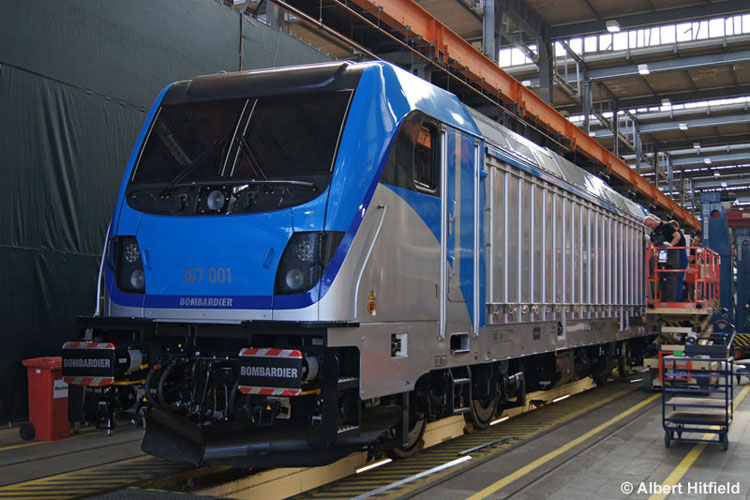
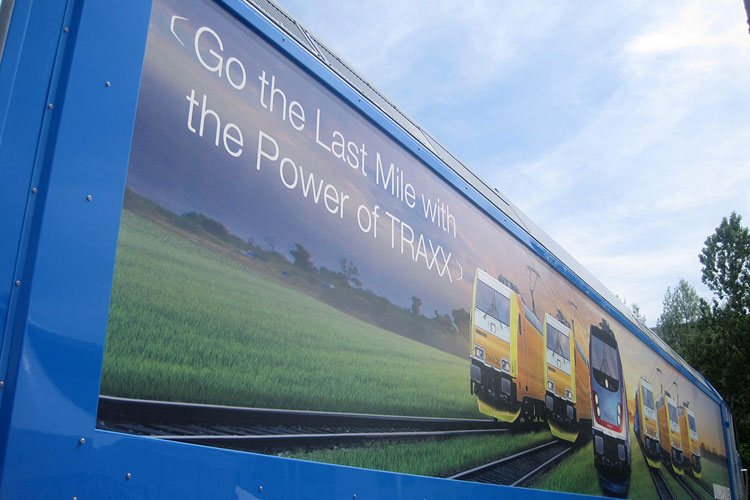
With the AC3, the Traxx sidewalls were ribbed again, result of a more simple construction method.
Bombardier also presented the Flex-Panel; Made of flexible canvas, installed like a curtain, this was an idea borrowed from the truck and trailer market. For customers that don't liked ribbs, the flex -panel covered them, but more important, it could offer a more cheaper way to customize the design of their locomotive. Especially the units property of leasing companies often switched between operators, so logos had to be swapped on a regular basis. Instead of painting them on, or applying vinyls, one could just change the flex panel. The base material was relatively cheap, it could be done within two hours and one didn't need a dry shed anymore. The base paint stayed untouched. However, if desired, Bombardier could also shove in a hard panel, or even no panel at all. No problem for the driving conditions of the locomotive.
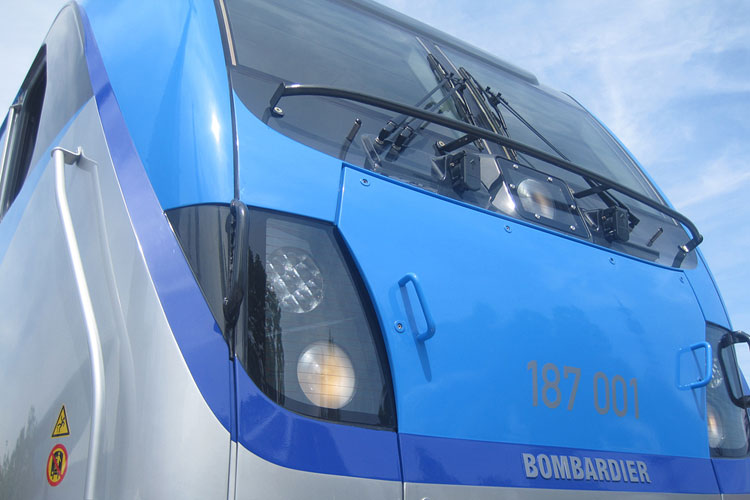
And then there was the visually most remarkable change; the new front-module. It was like a mask, placed over the steel body. It had no real constructional purpose. Made of plastic, it created more freedom of design, resulting in a more distinctive look. With the AC3, Bombardier introduced the accolade-shape on the Traxx, a style element we already knew from its corporate identity, and also applied on the Zefiro 380 design for example. The Bombardier autograph. Design agency PanikRuhdorfer was consulted during the design of the new Traxx identity. By the way, if a customer ordered more than 50 units, they can change the design of the GFK-module if they wanted...
the 'Last Mile' diesel
The first unit presented featured the 'last mile' diesel (LM). This was a small diesel engine with 240 kW output that makes it possible for a electric locomotive to bridge the gap between place of arrival and the multi-modal freight terminal, the shunt yard, the harbor network or the customer's factory site. Often short distances (therefore the last miles) with no overhead wire and the exclusive domain of diesel shunters.
The LM was a market-driven innovation, aiming at open access freight operators that were looking for a more efficient, cheaper transport solution, and that didn't want to be dependent on other operators when in need of a shunting locomotive. The Traxx AC already had some left-over space and technical progression (a smaller convertor for example) created just that last extra amount of space needed to accommodate a small diesel engine (type Deutz 2013 BR-4V) with a 230 kW engine output, a battery and a fuel tank of 400 liters. The placement of the diesel engine was done in such way no extra air intakes where needed and that when running on diesel power, the 300 kN traction effort was still doable. It then had a top speed of 50 kph, and it could haul trains up to 2000 t for 8-10 hours.
On the basis of the AC3 with LM, a similar version of the DC-member of the Traxx family was developed. A MS-version with a diesel engine was not feasible at that time, due to weight and space issues.

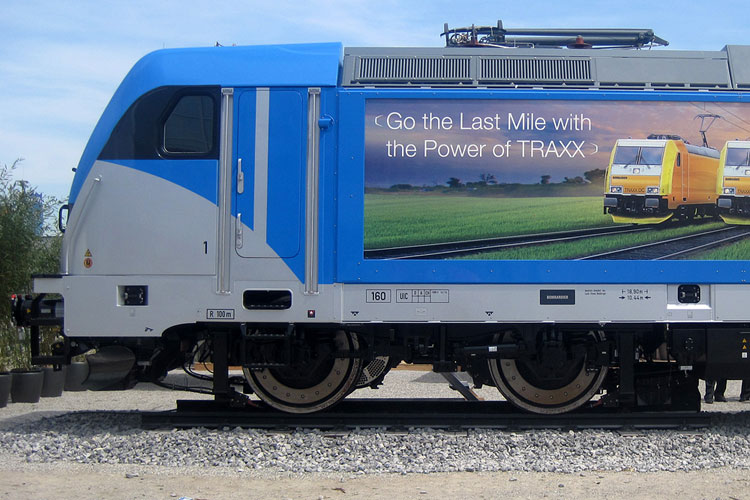
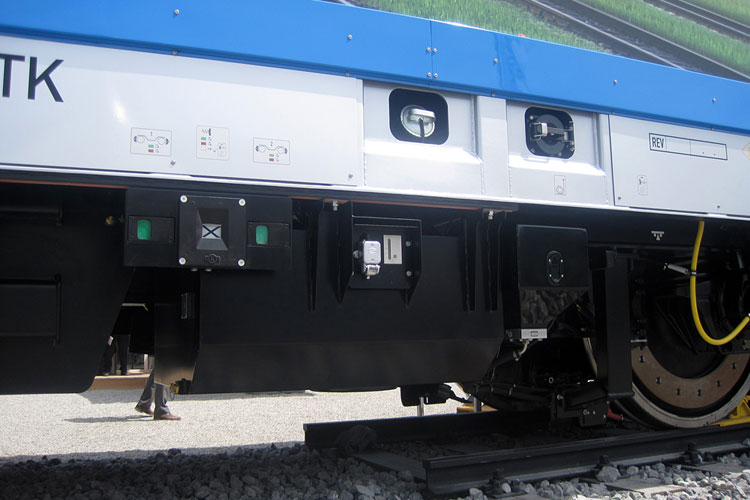
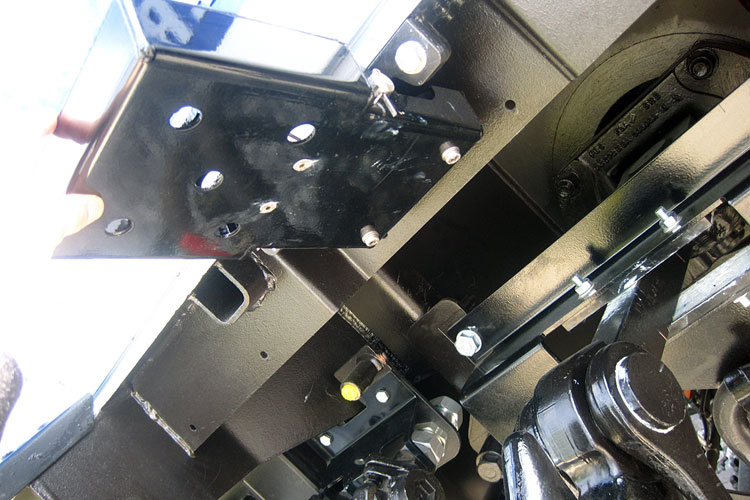
Traxx AC3 LM: why then?
Several internal and external drivers lead to the development of the AC3 LM;
-->When looking at the Traxx production at Bombardier's assembly factories in Kassel and Vado Ligure, the current AC2 version (introduced in 2004) was laying behind on the other three basic configurations of the family, the Traxx MS(2), its DC derivate and the diesel-Traxx DE. These where introduced in September 2006, sharing up to 70% of their components.
--> From 2000 to 2010, Bombardier had been building the AC2 in large numbers for DB Schenker. Due to contractual reasons the AC2 production line could not be migrated to the 2006 platform. Bombardier and DB Schenker agreed to update the AC-platform only once during its production period, and that revision was already done when migrating from AC1 to AC2 in January 2005.
--> Bombardier had been working on the Dual-Power project for the USA-Canadian since 2006. During this project the question was raised if any of this knowledge could serve the European market. There was some market research, changing the original idea of a 4MW electric engine with a 1MW diesel, to a normal Traxx AC with a smaller diesel-propelled assistant.
--> There were two operators, BLS Cargo and TX Logistik, both in close contact with Bombardier about their needs. The idea of an engine with two propulsion systems, being able to full cover the complete rail logistic chain, was an answer to their problems. For example, BLS Cargo does have to rely on the services of SBB Cargo anymore, for shunting locally, nor needs to invest in shunting units
--> Finally, there was just that general feeling, the general need for something new, and fresh. The previous Traxx exterior looked a bit, well, Spartan. It still resembled the 189 a bit, as they had a common DB background. The Alstom PrimaII and Siemens Vectron already made statement, that Bombardier had to answer. And they just needed to visually back-up again that there product was state-of-the-art again... Otherwise they kept on selling new products in old boxes...

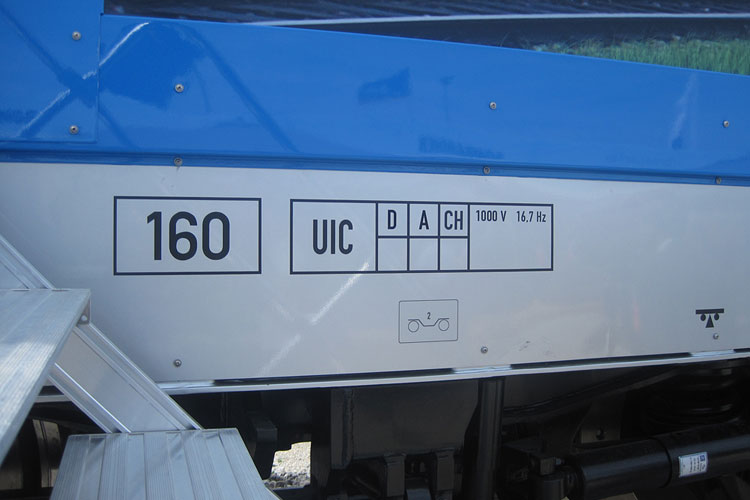
187 001 at T&L2011
The AC3 made its debut at the Transport & Logistics fair in Munich in May 2011. The unit on display had service number 187 001, and was far from complete. For demonstration purposes only, a small running diesel-engine from Deutz was aboard, a pantograph could go up and some lights could be switched on, but that was about it. It still had to go back to Kassel for completion.
It was painted in the blue color of lease company Railpool. The accolade-shape was dark blue and the base colour was silver. It's 'theoretical' inscriptions told us that a top speed of 160 kph would be possible (a first for a Traxx AC with Tatzlager-propulsion), and that homologation for Germany, Austria and Switzerland was envisaged. A special exhibition space was implemented in one of its cabins, explaining the functionality of the concept.
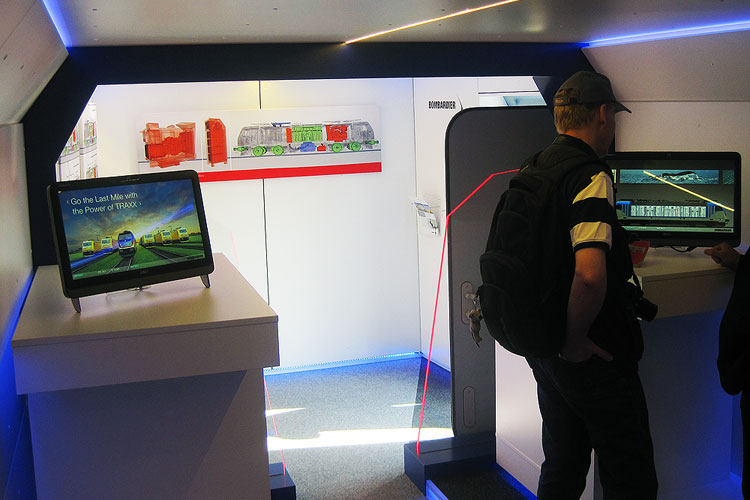
Railpool: launching customer
During the presentation of the 187 001, lease company Railpool profiled itself as main driver for innovative locomotive products. It was the first to order Traxx AC3 LMD locomotives, as part of a framework agreement with Bombardier of December 2010 (36 machines where ordered at that time of undefined configuration). BLS Cargo was presented as their first lessor. The Swiss operator signed for three machines.
outlook
At this moment (May 2011), the first Traxx AC3 LM still needs to completed. 2012 will be year full of tests. Bombardier expects to hand over the first homologated locomotive in 2013.
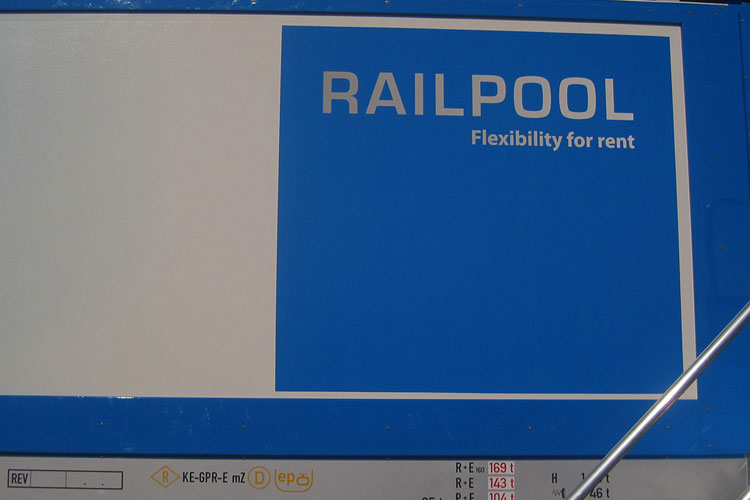
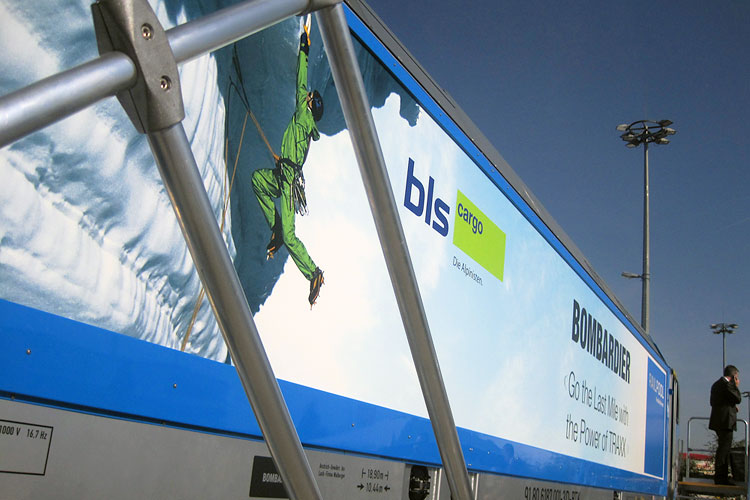
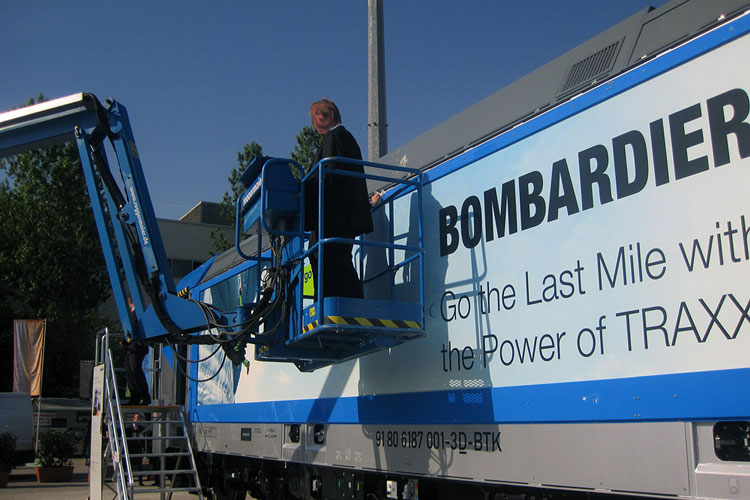
main technical data |
AC3 Last Mile |
| product description |
asynchrone dual frequency electric locomotive with last-mile diesel engine |
| production period |
2011 onwards |
| total number built |
1 |
| |
|
| track gauge |
1435 mm |
traction converter |
2x MITRAC TC 3360 AC |
diesel engine |
Deutz, type unknown, Stage IIIb |
Diesel tank volume |
400 l |
number of axles |
4 |
axle configuration |
Bo'Bo' |
weight |
+/- 88 t |
| axle load |
+/- 22 t |
length of buffers |
18.900 mm |
| maximum width |
2.977 mm |
| height (over pantographs) |
4.283 mm |
| wheel base (distance center of bogies) |
2.600 mm |
| wheel diameter (max / min) |
1250 / 1170 mm |
| |
|
| Performance as electric locomotive |
|
system voltage |
15kV AC or 25kV AC |
Vmax |
160 kph |
duration power rating, AC voltage |
5.600 kW |
tractive effort |
300 kN |
electric braking effort |
240 kN (limited) |
electric braking power |
5.600 kW |
| |
|
| Performance with last-mile diesel |
|
Vmax |
50 kph |
duration power rating |
180 kW at rail (+/- 240 kW engine output) |
tractive effort |
300 kN |
| |
|
source all information: Bombardier Transportation
|